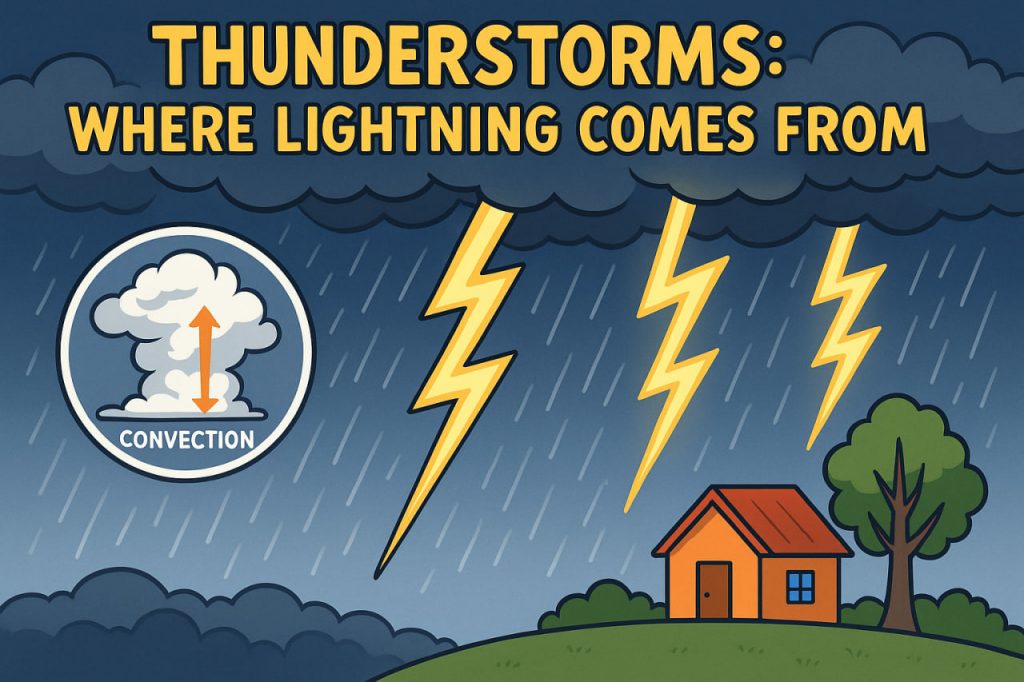Thunderstorms are dramatic weather events that bring rain, wind, thunder, and lightning. They occur when warm, moist air rises quickly into cooler air in the atmosphere, creating towering cumulonimbus clouds. One of the most fascinating and powerful features of a thunderstorm is lightning—a sudden electrical discharge that lights up the sky and produces thunder.
How Thunderstorms Form
A thunderstorm begins with convection, where warm air rises from the ground and cools as it ascends. When the moisture in this rising air condenses, it forms clouds and releases heat, fueling more upward motion. This process can build massive clouds stretching up to 15 kilometers (9 miles) high.
Within these clouds, water droplets, ice crystals, and hailstones bump into each other, generating static electricity. This separation of electrical charges sets the stage for lightning.
What Causes Lightning?
As particles collide inside the storm cloud, the top of the cloud becomes positively charged while the bottom becomes negatively charged. The ground beneath the cloud becomes positively charged in response. When the difference in charge becomes too great, the energy is released as a lightning bolt.
Lightning can occur:
- Within the cloud (intra-cloud)
- Between two clouds (cloud-to-cloud)
- Between the cloud and the ground (cloud-to-ground), which is the most dangerous type
The air around a lightning bolt is heated to about 30,000°C (54,000°F)—hotter than the surface of the Sun. This sudden heating causes air to expand rapidly, producing the sound we know as thunder.
Dangers of Lightning
Lightning is extremely powerful and can be fatal. It causes deaths, wildfires, and power outages each year. People outdoors during a storm are at the greatest risk. Trees, tall buildings, and open areas are frequent targets of ground strikes.
Electronics and appliances can also be damaged if lightning travels through electrical or communication lines into homes or businesses.
Safety During Thunderstorms
To stay safe during a thunderstorm:
- Seek shelter indoors or inside a car.
- Avoid tall trees, hilltops, and open fields.
- Don’t use wired electronics or plumbing.
- Stay away from windows and metal objects.
- Wait at least 30 minutes after the last thunderclap before going back outside.
Lightning can strike even before the rain begins or after it ends, so caution is essential.
The Importance of Thunderstorms
Despite their dangers, thunderstorms are vital to Earth’s systems. They help balance atmospheric temperature and redistribute heat. They also bring much-needed rainfall to dry areas and support the nitrogen cycle by helping to fix atmospheric nitrogen into a form plants can use.
Glossary
- Cumulonimbus cloud – A large, towering cloud that produces thunderstorms.
- Convection – The upward movement of warm air in the atmosphere.
- Static electricity – An imbalance of electric charges built up in a material.
- Lightning bolt – A sudden discharge of electricity from a thunderstorm.
- Nitrogen cycle – The natural process of converting nitrogen into usable forms for living organisms.


